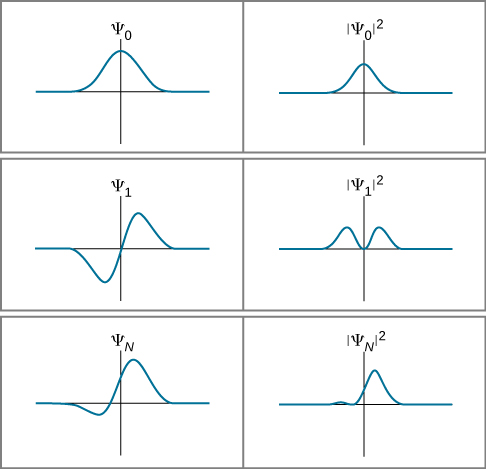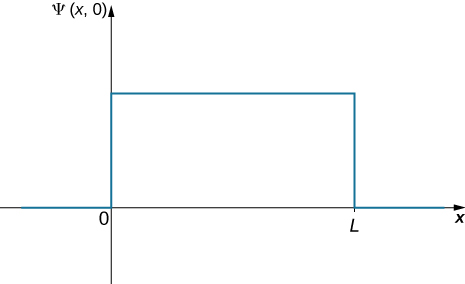| << Chapter < Page | Chapter >> Page > |

If the wave function varies slowly over the interval , the probability a particle is found in the interval is approximately
Notice that squaring the wave function ensures that the probability is positive. (This is analogous to squaring the electric field strength—which may be positive or negative—to obtain a positive value of intensity.) However, if the wave function does not vary slowly, we must integrate:
This probability is just the area under the function between x and . The probability of finding the particle “somewhere” (the normalization condition ) is
For a particle in two dimensions, the integration is over an area and requires a double integral; for a particle in three dimensions, the integration is over a volume and requires a triple integral. For now, we stick to the simple one-dimensional case.

This integral can be broken into three parts: (1) negative infinity to zero, (2) zero to L , and (3) L to infinity. The particle is constrained to be in the tube, so outside the tube and the first and last integrations are zero. The above equation can therefore be written
The value C does not depend on x and can be taken out of the integral, so we obtain
Integration gives
To determine the probability of finding the ball in the first half of the box we have

Notification Switch
Would you like to follow the 'University physics volume 3' conversation and receive update notifications?